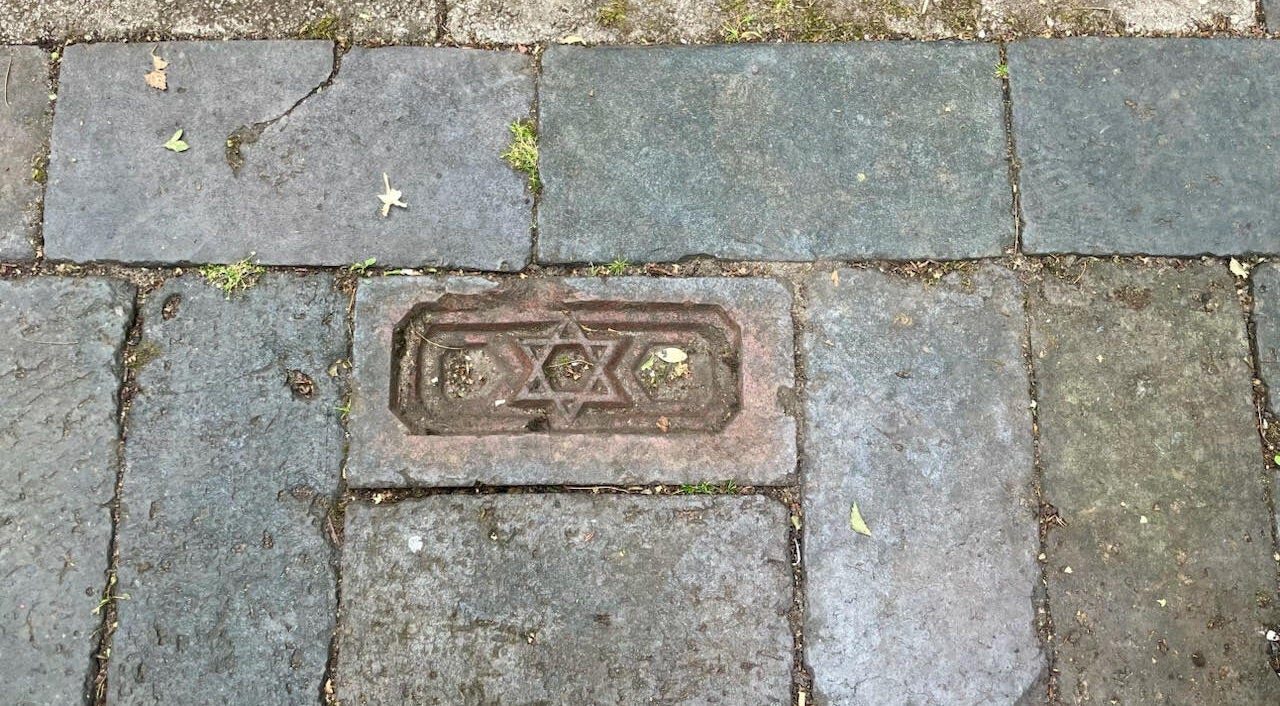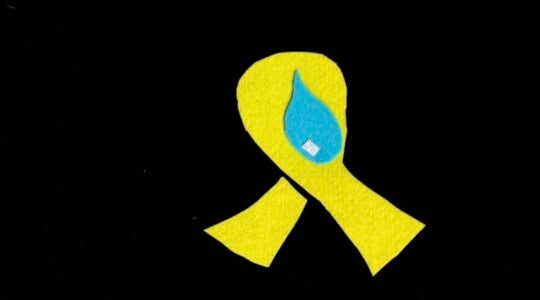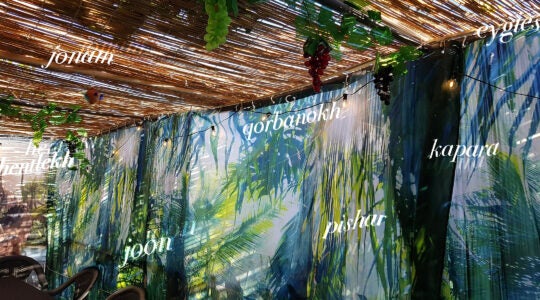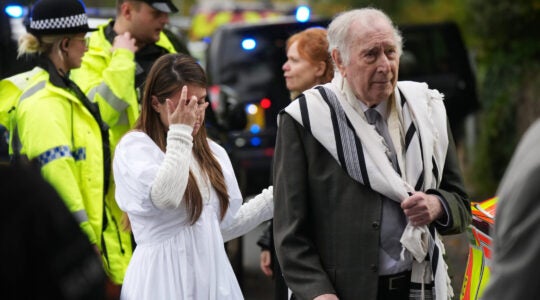BIRMINGHAM, England — I was not at Glastonbury when Bob Vylan and Kneecap led their anti-Israel chants. I was instead at Moseley in Bloom, an annual event that takes place in my leafy neighborhood in Birmingham in the middle of England, trying to make sense of what seemed to be a Jewish garden decoration.
Like Glastonbury, Moseley in Bloom is very British; it’s also very bougie. The English love their gardens, and once a year, those with some of the most fantastic gardens imaginable open their doors to the rest of us to come and take a peek. There are ponds with lily pads, burbling fountains, bronze sculptures, and lush, colorful foliage. My husband and I love wandering around these cultivated wonderlands, and the owners love showing them off. Many of them have live music going — jazz bands, folk singers — and sell cheap glasses of prosecco and samosas. And this year, my husband caught sight of a garden featured in the pamphlet, promising “Star of David” bricks.
What could it mean? As a minority community of 0.4% of the population of Britain, Jews feel both negligible, and, of late, unloved — with Glastonbury offering a prime example of why. Could the bricks represent some kind of antisemitic statement, like the Jewish stars painted on Paris apartment buildings recently were seen to be? Or a hackneyed symbol of solidarity in a city that’s home to — apart from the robust student population during the academic year — very, very few Jews? As England’s second-largest city, Birmingham has over a million people, but our rabbi routinely spends his mornings desperately texting congregants in hope of making a minyan in the majestic cathedral synagogue that is rarely crowded.
Soon we found ourselves in yet another beautiful backyard with a pond and a fountain and vivid red and orange and yellow flowers. It took a few minutes of meandering around the backyard before we discovered them: blue bricks mixed into the paving stones. Each had a Star of David in the center, and you could just make out a W inside the star. As I was snapping photos, the owner came over to say hi.
“I found these when they were tearing down a garden wall in the neighborhood,” he explained. “I was looking for blue bricks, and these were among them. We think they must have been used by a Jewish family. I read that it was an Eastern European practice to put them in your garden walls for protection.”
If I felt slightly skeptical — I had never heard of such a practice, and also it didn’t fit with this city, Birmingham, where even my cathedral synagogue is so discreet on the outside as to go utterly unnoticed as a Jewish space — I tried to hide it.
“What made you want them?” I asked. He told me that his wife’s great-grandfather had been Jewish. He came from Eastern Europe during the pogroms sometime in the 19th century. “And I’m 10% Jewish too!” he announced. I asked if he had taken a DNA test and he nodded.
He talked a little more about the bricks, which had been manufactured by a company in nearby Staffordshire. Indeed, as I discovered when I got home, P & S Wood, named after Peter and Samuel Wood, brothers, were brickmakers in the late 19th century, the sons of George Wood, a captain in the industry. They specialized in blue bricks. The W in the star refers to wood. The star represents … a nice design. The Woods were not Jewish. Neither, most likely, was the vast majority of their clientele.
Elsewhere on my travels in England I’ve spotted on a Victorian building here and there a Star of David — or, as I think of it, a Magen David — and squealed with excitement. But then, as now, they’ve turned out to be nothing more than a symmetrical shape, a pretty adornment.
In some ways, those moments leave me feeling lonely. But they also bring to mind for me what my friend Gavin Schaffer, a historian of Britain, writes about in his new book “An Unorthodox History: British Jews Since 1945.” The first chapter, called “The Last Jew of Merthyr and other bubbe meise,” argues that despite sensationalist headlines proclaiming the last Jew of any place — Schaffer uses Merthyr Tydfil, the Welsh town where his family came from — Jews and Jewishness rarely fully disappear from anywhere in Britain. In Merthyr, years after the “last” Jew had left, he writes, local self-identified Jews were hijacking Jewish tours of the town, telling family stories.
At a recent doctoral defense in London, a fellow examiner told me he wasn’t buying Schaffer’s conclusions. “These people aren’t affiliated with any shul, any community. They don’t live Jewish lives,” he told me. “What does it mean that they’re ‘Jewish’? Does it matter that they have some tenuous connection to Jewishness?”
In the garden bricks, I found an answer. More interesting than their real history is the people who reclaimed them, and in doing so, are reclaiming their Jewish heritage. A great-grandfather, and a DNA test suggesting an ancestor back in the day — it isn’t much. But a tenuous connection feels far more hopeful these days than the chants heard at Glastonbury. To these people, Jewishness is part of who they are, so much so that, even if none of the Victorian Jews were putting Magen Davids on display in their garden walls, they are excited to do so.
JTA has documented Jewish history in real-time for over a century. Keep our journalism strong by joining us in supporting independent, award-winning reporting.







